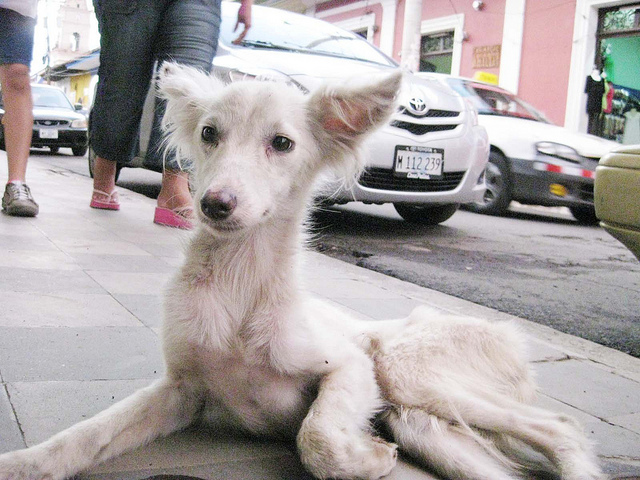This article is written by Ashmitha S, Associate at GKM Associates.
Table of Contents
Introduction
I have come across many cruel acts against street dogs. I felt it’s time to know the rights of such innocent animals. On the other hand, these innocent animals have turned against humans due to the experiences they faced. In such a situation I felt that how is it possible to control them? Why people tend to kill those animals in an uncivilized way? Is killing only the way to control them? In this crisis of COVID-19, I also see many innocent street dogs die without proper food/water etc. We see news about the used face masks/gloves thrown on streets which are acting as toys for this innocent creed of animals. In various other countries, we have also seen instances where the stray dogs and cats are infected by COVID-19, that leaving huge questions as to whether that can be meant for the spread of the pandemic.
We also see many instances where people who try their best to feed these strays and neuter them also facing issues such as they are not allowed to feed the dogs as the other residents of the area object them says feeding dogs would create a mess as the food particles are not cleaned by the feeders after they feed the stray dogs.
A human being is said to be superior to all animal kind. As human beings, even animals are a social being. They too must be treated well with compassion. Our constitution not only speaks about the rights, duties, etc regarding the citizens towards the state but also towards the innocent creatures which form the part of our society
I also felt that the lack of legal awareness about the animals and animal welfare workers among the people. People often worry about their own problems such as their job, property, industry, marital issues, etc.. But compassion and care towards animals are also important which is neglected the most. All animals are it a pet, or the stray animals deserve to be treated with love and kindness. It’s necessary for human beings in the civilized society to behave in a civilized way and not being barbarous. Even the pet animals are not toys for the human to throw their frustration out or fulfil their weird fantasies. There are instances where the pet owners have trashed the innocent animals (punishable under sec.11(1)(i) of Prevention of cruelty to animals Act 1960), have sexually abused the animals (punishable under sec.377 of Indian Penal Code), they have allowed their kids to torture the animal in the name of games etc.(offence under sec.11(1)(a) of Prevention of Cruelty to Animals Act 1960).

I have also seen the innocent dogs being killed for their meat, killed because their owners had to dump them due to their other responsibilities, mass killing to reduce the menace caused by stray dogs which try to protect their territory/ secure food for their life. There are also instances of illness in the dogs that cost high for treatment and the owners/local authorities/ non-government organisations choose to put the dogs to sleep.
When we stand in the face with this lockdown and pandemic, we hear statements like the virus may spread through animals and many people would even get cruel to call for Killing of these innocent animals. In this view, I am putting forth my article to discuss the existing Laws regarding the rights of the animals and our duties towards the same.
This article will deal with grounds in which the stray dogs can be culled and also discuss what are the responsibility of the local authorities under The Prevention of Cruelty to Animals Act 1960 and Animal Birth Control (Dog) Rule 2001 in the protection of the innocent creatures.
The following are the laws governing the animal
Under the constitution of India
Article 48 A- ” State shall endeavour to protect and improve the environment and to safeguard the forests and wildlife of the country.”
Article 51A(g) states it to be a duty of every citizen of India “to protect and improve the natural environment including forests, lakes, rivers and wildlife, and to have compassion for living creatures.”
Under the Indian Penal Code
Section 428 – Mischief by killing or maiming animal of the value of ten rupees- whoever commits mischief by killing, poisoning, maiming or rendering useless any animal or animals of the value of ten rupees or upwards, shall be punished with imprisonment of either description for the term which may extend to two years or with fine or with both.
Section 249 – Mischief by killing or maiming cattle, etc of any value or any animal of the value of fifty rupees – whoever committing mischief by killing, poisoning, maiming or rendering useless any elephant, camel, horse, mule, buffalo, bull, cow or ox, whatever may be the value thereof or any other animal of the value of fifty rupees or upwards, shall be punished with imprisonment of either description for a term which may extend to 5 years or with fine or with both.
Enactments
- Prevention of cruelty to Animals’ Act 1960- the object was to prevent the infliction of unnecessary pain or suffering on animals.
- Animal welfare Board of India- was established in 1962 under s.4 of the Prevention of Cruelty to Animals Act. Well, known Humanitarian Rukmini Devi Arundale was instrumental in setting up the board and was its first chair. The board had its headquarters at Chennai later it moved to Ballabhagar, Haryana state in 2018.
- Animal birth control (dogs) rules 2001.- as per the sec.38 (1) and (2) of act 1960. There is a requirement to frame rules by the central government.
The statics of stray dogs population in the world
- Romania (4.1 million)
- France (7.4 million)
- Argentina (9.2 million)
- India (30 million)
- Philippines (11.6 million)
- Japan (12.0 million)
- Russia (15.0 million) etc.
India has more than 30 million stray dogs with more than 20,000 people dying of rabies every year. There are many issues relating to the nuisance caused from stray dogs in India such as the dogs chase the vehicles and which sometimes leads to accidents; when the stray dogs come across other pet dogs during walking the stray dogs tends to bark at those pet dogs which is followed by rest of the dogs in the street causing a disturbance in the residential areas; when she-dog is given birth to her puppies at that time she does not allow anyone near her puppies, at this time she will be protective and ferocious. On the other hand, there is a lot of violence against the dog such as during Diwali crackers are tied to the tail of dogs seeking fun from their response( dogs are sensitive than that of human beings)
In Karnataka, the population of stray dogs has increased by 40% from 2006 to 2019. In 2006 the population of dogs are estimated to be 2 lakhs. In 2019, according to BBMP survey, there were 3,09,972 dogs.
It is important for BBMP to keep track of a population of stray dogs. This will help BBMP to plan Animal Birth Control and Anti Rabies Vaccination programmes. The census shows out of 3.09 lakhs strays only 1.68 lakhs are neutered which is 54.24% of the total population. The city-wide survey shows that there are 3.67 dogs per 100 people.
One of the main reasons for an increase in the population of stray dogs is that the drainage systems not properly maintained. Dogs are social animals just like human beings. They tend to be in the company of human beings. Therefore, they are found more where the human population are more. When the drains from the butcher shops and other wastes from any shops near the drainage or sewage are not disposed of in a proper manner. The stray dogs tend to depend on these wastes for their foods. Because of this bad maintenance of the drainage system, the stray dog population increases. The local authorities lack their responsibility in controlling the unnecessary breeding also adding upon the careless attitude of owners of the dog who let go their dog as they are not able to take care of their pets.
The Bruhat Bengaluru Mahanagara Palike (BBMP) in fact has been implementing the Animal Birth Control Programme for stray dog/s population, through the provisions of Animal Birth Control (Dogs) Rules 2001. These rules have been framed U/s 38 of “The Prevention & Cruelty to Animals Act 1960” under which unsterilised stray dog/s are caught, sterilised, vaccinated against Rabies, de-wormed and are released back in the same locality, but the problems appear to have not been solved, so far as an attack by a stray dog/s.
The Division Bench of the Hon’ble High Court in Master. Jishnu’s case (WP No.37197/2011 & other connected matters) directed BBMP to frame Guidelines in the matter of grant of compensation to the victims of attacks by the stray dog/s. For stray dog/s, there would be no owner.
In fact, there is no provision in Karnataka Municipal Corporation Act 1976, in the matter of reimbursing medical expenses/payment compensation to a victim of an attack by a stray dog/s. But BBMP has shown a humane approach in this behalf In Karnataka, BBMP has set out guidelines dated 17.6.2015 in this regard. These guidelines are to be followed in the jurisdiction BBMP.
How to control the breeding of the dog population
WHO and the World Society for the Protection of Animals (now called World Animal Protection), collaborated on the publication of Guidelines for Dog Population Management, which proposed a long-term method for the control of stray-dog populations by means of a methodical sterilisation programme.
That is because cruel mass-killing methods such as strychnine poisoning and electrocution, previously used by many municipalities in India, did not work. Dogs that evaded these measures, lead to increasing population.
After the implementation of Animal Birth control (dogs) Rule 2001, there are methods prescribed to kill the animals. Some of them are:
Rule 5 (b) – authorise the veterinary doctor to decide on a case to case basis the need to put to sleep critically ill or fatally injured or rabid dogs in a painless method by using sodium pentathol. Any other method is strictly prohibited;
Rule 9 – Euthanasia of Street Dogs—Incurably ill and mortally wounded dogs as diagnosed by a qualified veterinarian appointed by the committee shall be euthanised during specified hours in a humane manner by administering sodium pentathol for adult dogs and Thiopental Introperitoneal for puppies. No dog shall be euthanised in the presence of another dog.
Rule 10(4)- If the dog is found to have a high probability of having rabies it would be isolated till it dies a natural death. Death normally occurs within 10 days of contracting rabies.
The latest rules
- There can be no restriction to keep a dog in an apartment or Resident Welfare Association (RWA) or rented house from the members of the association of apartment or landlord. The landlord cannot charge extra for keeping the dog by his tenant.
- Feeding stray dogs should not be restricted by other people. Delhi High Court in the case Ms.Simmy Malhotra Vs State of Delhi and others (WP Crl No.1101/2009) opined that the purpose of feeding dogs is to keep them confined to a particular place and subject them to sterilization or vaccination or re-vaccination as the vaccination last for a year. The court further directs the Delhi police to ensure no harm is caused to volunteers of Animal Welfare Organisation in these places and they feed dogs.
- BBMP Special Commissioner for Animal Husbandry, D Randeep said that the BBMP is trying to facilitate the feeding by providing food packets.
Animal Birth Control (ABC) Groups in the city’s eight zones and have been feeding street dogs in their particular zones during the lockdown.
An informal survey of the various ABC’s revealed that they had fed 2000 dogs out of 3,09,972 dogs in the city. Police Commissioner Bhaskar Rao specified that he had ordered his police to give “feeding” crews free passage at checkpoints, provided they had all safety equipment, including masks. - With COVID 19 many people have been abandoning their pets being under the impression that pets can spread the virus. After receiving several complaints regarding this, BBMP has now released a circular that it will prosecute people under sec.11(1) of Prevention of Cruelty to Animals Act for abandoning their pets. WHO has stated that at present, there is no evidence that dogs or cats can be infected with COVID 19.
- The first case of an animal testing positive for the virus in the United States was in a tiger that had a respiratory illness at a zoo in New York City. Prior to the tigress testing positive, there were reports of dogs testing positive for COVID-19 in Hong Kong. In the US, two pet cats in New York state also tested positive on April 22.2020, marking the first known cases of domestic animals being affected by the disease in that country.
- BBMP has come up with a proposal of “Pet Dog Licensing bylaws 2020” which is prospective in nature. Few of the proposals are:
a) to prevent disturbance and nuisance to neighbours BBMP recommends the owners residing in flats or multi-dwelling units to avoid ferocious dog breeds like the German shepherd, rottweiler, Doberman and hounds and every pet owner irrespective of breed and origin must obtain and renew license every year on payment of a fee.
b) Mandatory for pet dog owners to get a license and radio collar embedded with a chip for their canines. Failure to do so will attract fine on Rs.1000.
c) Onus on the pet owner to scoop the poop of their pet if it has committed nuisance in a public place. An owner who fails to discharge their responsibility will be penalised with a fine of Rs.500 for the first offence and double the amount for subsequent time.
Case laws
People for the Elimination of stray troubles and others Vs. State of Goa and others (2009) 1 Bom CR 501 FB
Findings by Dr S. Radhakrishnan, J.- neither Mumbai Municipal Corporation Act 1888 nor Goa Municipalities Act 1968 makes the mandatory obligation of a mass killing of stray dogs. But they give discretion to Municipal Commission to kill stray dogs. This discretion is not absolute power to destroy stray dogs. There is no conflict between Animal Birth Control (dogs) rule 2001and Prevention of cruelty to Animals Act 1960 and between Mumbai Municipal Corporation Act and act 1960. If there is a conflict between Mumbai Municipal Corporation Act and Animal Birth Control (dogs) rule 2001and Prevention of cruelty to Animals Act 1960. Then, the central legislative scheme will prevail over the Mumbai Municipal Corporation Act.
In this scenario, the judge adopted Harmonious Construction to interpret as to whether the Mumbai Municipal Corporation Act or Central Legislative scheme can co-exist.
It was said that under the central legislative scheme, the stray dogs can be destroyed only in the following cases such as incurably ill, perennially violent, mortally wounded or rabid. These findings were not initially accepted by Justice Bhosale.
Further, Justice Bhosale opined that there cannot be laid any hard and fast rule regarding public nuisance caused by dogs. Whether the act of dog has caused public nuisance is to be determined and it varies from case to case. For such instances, the commissioner cannot exercise his discretion to destroy such dog. For some questions relating to nuisance by a dog are left open to the Municipal Authorities to decide and the court cannot dictate in such matter in every individual case. Animal Birth Control (Dog) rule2001 are silent about nuisance.
However, the discretion conferred to put stray dogs to sleep required to be judicially exercised and not according to whim, fancy of an authority who is empowered to discretion must be guided by inherent philosophy and also to avail of rule of law and fairness or justice.
In the end, Justice Bhosale accepted with the opinion of Justice Radhakrishnan that sec.11(3) of Act 1960 does not contemplate killing od “all stray dogs” in lethal chambers or such other methods as may be prescribed.
That is to say that the culling of stray dogs is permitted to the authority only in the manner prescribed by the Act and Rules. But this case was stayed by Supreme Court in Animal welfare Board of India Vs People for Elimination of stray Troubles (2016) 2 SCC 598 Animal welfare Board of India Vs People for Elimination of stray Troubles (2016) 2 SCC 598
In this case, it was said that all the state Municipal Corporations, Municipal Committee, District Boards and Local bodies shall be guided by the Act 1960 and Rule 2001 and it is the duty and obligation of Animal Welfare Board to see that they are followed with all seriousness. Once this done then a balance between compassion to dogs and the lives of human beings may harmoniously co-exist.
Emphasis was laid on sec.9(f) of Act 1960- a function of animal welfare board to- to take all such steps as the Board may think fit to ensure that unwanted animals are destroyed by local authorities, whenever it is necessary to do so, either instantaneously or after being rendered insensible to pain or suffering.
Sec.13 of Act 1960- the destruction of suffering animals. And also t the rule 9 and 10 of Rule 2001 which deals with dogs which are desired to be euthanised.
Thereby allowing culling of dogs as per the act and rules. The court ordered to file an affidavit containing data of dog bites and steps taken by the local bodies with regard to destruction or removal of the stray dogs, the population of stray dogs, the infrastructure they have provided as per law. Further, it was emphasised that no innovative method or subterfuge should be adopted. The order copy has to be sent to the chief secretary of each state and the competent authority of union territory so that they can follow the same.
Animal Welfare Board of India Vs People for Elimination of Stray Troubles (2017) 1 SCC 394
In this case, several other cases having the same issues relating to stray dogs were bought before the Supreme Court of India. In which the Kerala case that is M.R.Ajayan Vs State of Kerala (WP 28255/2011) was one among them. As it was a very serious matter where the stray dogs became dangerous to the life of human beings especially the old aged people and the children. Due to which there were deaths caused by dog bites. The HC gave directions as per the Act and rules for culling the stray dogs. HC stated that several measures to be urgently taken by local authorities, government and animal welfare board to combat stray dog menace which is increasing in the state and also directed for implementation of Animal Birth Control (dogs) rule 2001 and destruction of certain categories of dogs as per the rules or as per the direction by the animal welfare board to protect the residents of the locality.
In the case (2017) 1 SCC 394 it was concluded that culling was permitted as per the Rules and Act. There should be a humane way of killing certain dogs and not according to the whims and fancy.
Conclusion
After going through the above cases it is clear that the local authorities have the power as per the Animal Birth control Rule 2001 and Prevention of cruelty to Animals Act 1960 for culling the stray dogs in certain cases. And the local law does not prevail over the central legislative. It would be advisable to take a serious note on the directions laid by the supreme court in the above cases so that there can be peaceful society having a balance between the human life and the life of dogs. I feel that it is necessary to give definition to the nuisance caused by the dogs be it the pet or stray. So that the light ambiguity will be removed. There is a need for technological inventions (online methods) for tracking the dogs, sterilizing, medicating and its license. These issues are to be quickly responded by the authorities concerned.
LawSikho has created a telegram group for exchanging legal knowledge, referrals and various opportunities. You can click on this link and join:
 Serato DJ Crack 2025Serato DJ PRO Crack
Serato DJ Crack 2025Serato DJ PRO Crack










 Allow notifications
Allow notifications



